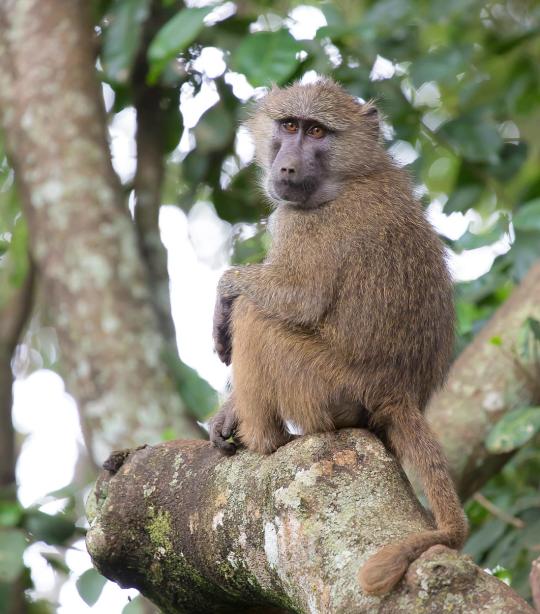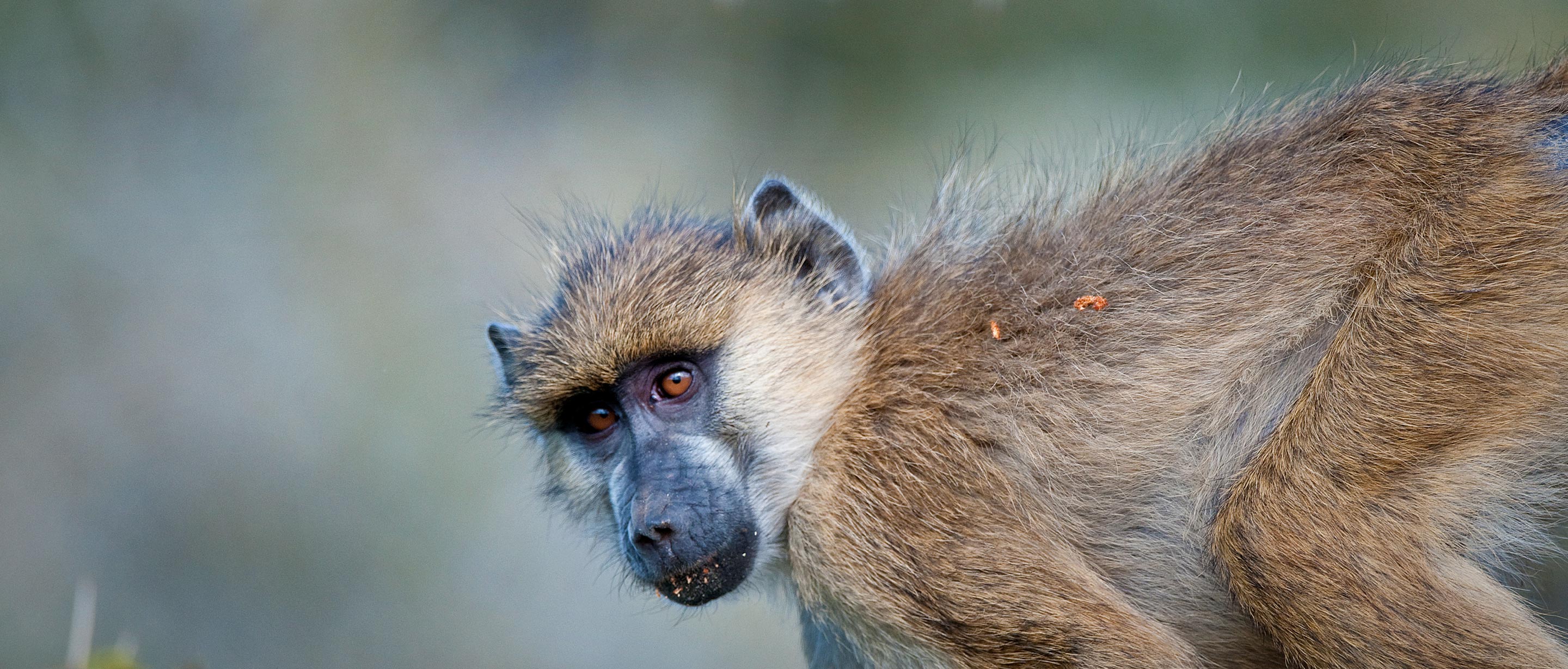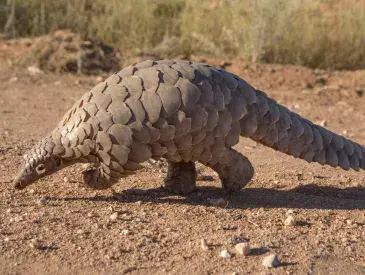What are baboons?
They are some of the world’s largest monkeys. There are five species of the baboon — olive, yellow, chacma, Guinea, and sacred — scattered across various habitat in Africa and Arabia. The olive baboon is the most extensively distributed of the baboon family. The baboon, like other Old World monkeys, does not have a prehensile (gripping) tail — meaning their tails are not used as a hand — but they are still able to climb when necessary. They all have dog-like noses, powerful jaws, sharp canine teeth, and thick fur. Males have a longer mane around the neck, called a ruff.
Olive baboon (Papio anubis) Yellow baboon (Papio cynocephalus) Sacred baboon (Papio hamadryas) Chacma baboon (Papio ursinus) Guinea baboon (Papio papio)
9 to 31 kilograms (20 to 70 pounds)
50 to 76 centimeters at the shoulder (20 to 30 inches)
20 to 40 years
Savannas and woodlands
Omnivorous
About 6 months
Humans, leopards, and cheetahs

Challenges
The baboon’s major predators are humans.
Baboons are often intentionally poisoned and killed because they tend to be considered as a pest species. They are also hunted for their skins—this is more common with the sacred baboon. Use of baboons in laboratories and medical research has also increased.
Baboons are losing their homes.
Habitat loss due to overgrazing, agricultural expansion, irrigation projects, and overall human settlement growth is a threat to this species.
Solutions
Our solutions to protecting the baboon:
African Wildlife Foundation works with communities to develop appropriate sustainable solutions that benefit both the threatened monkey and humans. By using technology, like Geographic Information System (GIS) to identify threats, AWF can lead to more effective conservation plans. We also provide training on agricultural best practices, ensuring that communities’ agriculture activities are sustainable and more productive, thereby protecting more space for baboons.
AWF works with rural communities, living in close proximity to wildlife, to build schools in exchange for practicing conservation. In Tanzania, we rebuilt Manyara Ranch Primary School and equipped it with a full technology lab and a conservation curriculum. By working with communities to provide tangible incentives for conservation and educating future generations in conservation principles, we are able to foster a culture of conservation.


Behaviors
They like to hang out in groups.
They sleep, travel, feed, and socialize in groups averaging of about 50. The yellow baboon typically forages in extended, well-spaced troops, which have been recorded to consist of up to 300 animals. These groups usually consist of seven or eight males and about twice as many females plus their young. The family unit of females and juveniles forms the core of the troop. Males will leave their natal troops as they mature and move in and out of other troops.
Diet
The baboon is an opportunistic eater.
These monkeys are omnivorous and will eat just about anything edible. Grass makes up a large part of their diet, along with berries, seeds, pods, blossoms, leaves, roots, bark, and sap from a variety of plants. They also eat insects and small quantities of meat, such as fish, shellfish, hares, birds, vervet monkeys, and small antelopes. Chacma baboons tend to live in more arid and desert habitats and were observed to survive without water for up to 11 or more days. They all can subsist solely on grass, which gives them the advantage of taking up residencies in savannas not frequented by other monkeys.
Habitats
Where do baboons live?
They are found in surprisingly varied habitats and are extremely adaptable. These monkeys prefer semi-arid habitats, like savannas and bushlands, but some live in tropical forests and mountains. The major requirements for any habitat appear to be abundant water sources and safe sleeping places—either in tall trees or on cliff faces.



